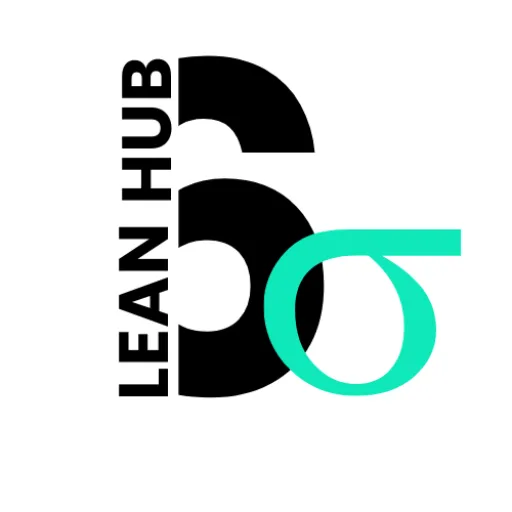Accelerating Change: Rapid Improvement Event
In the fast-paced world of modern business, organizations are constantly seeking ways to enhance efficiency, reduce waste, and improve overall performance. One effective methodology that has gained traction in recent years is the concept of Rapid Improvement Events (RIEs). These events, often rooted in Lean principles, are designed to facilitate quick, focused efforts aimed at solving specific problems or improving particular processes within an organization.
By bringing together cross-functional teams for a concentrated period, RIEs enable organizations to identify inefficiencies and implement solutions in a matter of days rather than months. The essence of RIEs lies in their structured yet flexible approach to problem-solving. Typically lasting from a few days to a week, these events harness the collective expertise of team members who are directly involved in the processes being examined.
This collaborative environment fosters creativity and innovation, allowing participants to brainstorm and test solutions rapidly. The urgency of the timeline encourages teams to prioritize action over deliberation, leading to tangible improvements that can be measured and evaluated almost immediately.
Key Takeaways
- Rapid Improvement Events (RIEs) are a structured approach to quickly improving processes and solving problems in the workplace.
- Accelerated change is necessary in today’s fast-paced business environment to stay competitive and meet customer demands.
- The RIE process involves identifying a problem, assembling a cross-functional team, analyzing the current state, developing and implementing solutions, and monitoring results.
- Successful RIEs require strong leadership, clear goals, effective communication, and a focus on continuous improvement.
- Accelerated change in the workplace leads to increased efficiency, cost savings, improved quality, and enhanced employee morale.
Understanding the Need for Accelerated Change
The necessity for accelerated change in organizations stems from various factors, including increased competition, evolving customer expectations, and technological advancements. In an era where businesses must adapt quickly to survive, traditional methods of change management often fall short. Lengthy planning cycles and bureaucratic processes can stifle innovation and delay the implementation of critical improvements.
As a result, organizations are increasingly turning to RIEs as a means to expedite change and remain competitive. Moreover, the global pandemic has underscored the importance of agility in business operations. Companies that were able to pivot quickly in response to shifting market conditions often emerged stronger than their competitors.
RIEs provide a framework for organizations to harness this agility by enabling them to respond swiftly to challenges and opportunities alike. By focusing on rapid problem-solving and continuous improvement, organizations can cultivate a culture that embraces change rather than resists it.
The Process of Rapid Improvement Events
The process of conducting a Rapid Improvement Event typically follows a well-defined structure that ensures efficiency and effectiveness. Initially, the organization identifies a specific problem or area for improvement that requires immediate attention. This could range from streamlining a production line to enhancing customer service processes.
Once the focus area is determined, a cross-functional team is assembled, comprising individuals with diverse skills and perspectives relevant to the issue at hand. The event itself usually begins with a thorough analysis of the current state of the process being examined. This may involve mapping out workflows, collecting data on performance metrics, and identifying bottlenecks or sources of waste.
Armed with this information, the team engages in brainstorming sessions to generate potential solutions. The emphasis during these discussions is on creativity and open-mindedness, encouraging participants to think outside the box without fear of criticism. Following the ideation phase, the team prioritizes the proposed solutions based on feasibility and potential impact.
This is where rapid prototyping comes into play; teams may create quick tests or pilot programs to evaluate the effectiveness of their ideas in real-time. The iterative nature of this process allows for adjustments and refinements based on immediate feedback, ensuring that the final solutions are both practical and impactful.
Key Components of a Successful Rapid Improvement Event
| Key Components | Description |
|---|---|
| Clear Objective | The event should have a specific and measurable goal to achieve. |
| Engaged Leadership | Leaders should actively participate and support the event. |
| Multi-disciplinary Team | A diverse team with different skills and perspectives should be involved. |
| Data-Driven Approach | Decisions and improvements should be based on data and evidence. |
| Rapid Implementation | Changes and improvements should be implemented quickly. |
| Continuous Improvement | There should be a plan for sustaining and building on the improvements. |
Several key components contribute to the success of a Rapid Improvement Event. First and foremost is leadership support. For an RIE to be effective, it requires buy-in from upper management who can provide resources, remove obstacles, and empower teams to take ownership of their projects.
Leadership involvement not only legitimizes the event but also motivates participants by demonstrating that their efforts are valued at the highest levels of the organization. Another critical component is effective facilitation. A skilled facilitator plays a pivotal role in guiding the team through the RIE process, ensuring that discussions remain focused and productive.
This individual should possess strong communication skills and an understanding of Lean principles to help navigate challenges that may arise during the event. Additionally, facilitators can help maintain momentum by keeping participants engaged and accountable throughout the process. Data-driven decision-making is also essential for successful RIEs.
Teams should rely on quantitative metrics to assess current performance levels and evaluate the impact of proposed changes. By grounding discussions in data, teams can avoid subjective opinions and focus on objective evidence that supports their recommendations. This analytical approach not only enhances credibility but also fosters a culture of continuous improvement within the organization.
Benefits of Accelerated Change in the Workplace
The benefits of implementing Rapid Improvement Events extend far beyond immediate process enhancements. One significant advantage is the cultivation of a culture that embraces continuous improvement. When employees witness firsthand the positive outcomes resulting from RIEs, they become more inclined to engage in future improvement initiatives.
This shift in mindset can lead to increased employee morale and job satisfaction as individuals feel empowered to contribute to organizational success. Additionally, RIEs can lead to substantial cost savings for organizations. By identifying inefficiencies and streamlining processes, companies can reduce waste and optimize resource allocation.
For instance, a manufacturing firm that conducts an RIE focused on reducing cycle times may discover ways to eliminate unnecessary steps in production, resulting in lower labor costs and increased output. These financial benefits can be reinvested into further improvements or innovation initiatives. Furthermore, accelerated change through RIEs enhances customer satisfaction by enabling organizations to respond more effectively to client needs.
In today’s market, customers expect quick responses and high-quality service. By improving internal processes through RIEs, companies can deliver products and services more efficiently, ultimately leading to higher customer retention rates and positive word-of-mouth referrals.
Case Studies of Successful Rapid Improvement Events
Numerous organizations have successfully implemented Rapid Improvement Events with remarkable results. One notable example is a healthcare provider that faced challenges with patient discharge processes leading to extended hospital stays and increased costs. By conducting an RIE focused on this issue, a cross-functional team comprising nurses, physicians, administrative staff, and discharge planners was assembled.
During the event, the team mapped out the existing discharge workflow and identified several bottlenecks, including delays in obtaining necessary approvals and inadequate communication between departments. By brainstorming solutions such as implementing standardized discharge protocols and enhancing interdepartmental communication channels, the team was able to reduce average discharge times by 30%. This not only improved patient satisfaction but also resulted in significant cost savings for the hospital.
Another compelling case study involves a manufacturing company that sought to improve its order fulfillment process. The organization faced frequent delays due to inefficient inventory management practices. Through an RIE, team members analyzed inventory turnover rates and identified opportunities for better stock management techniques.
By implementing just-in-time inventory practices and enhancing supplier relationships, the company reduced order fulfillment times by 40%, leading to increased customer satisfaction and repeat business.
Overcoming Challenges in Accelerating Change
While Rapid Improvement Events offer numerous benefits, organizations may encounter challenges when attempting to accelerate change. One common obstacle is resistance from employees who may be apprehensive about new processes or fear job displacement due to automation or efficiency improvements. To address this concern, it is crucial for leadership to communicate transparently about the purpose of RIEs and how they will ultimately benefit both employees and the organization as a whole.
Another challenge lies in sustaining momentum after an RIE concludes. Organizations may experience initial enthusiasm following an event but struggle to maintain engagement over time. To combat this issue, it is essential to establish follow-up mechanisms that track progress on implemented changes and celebrate successes along the way.
Regular check-ins with teams can help reinforce accountability and ensure that improvements are integrated into daily operations. Additionally, organizations must be prepared for potential setbacks during implementation phases. Not every solution generated during an RIE will yield immediate results; some may require further refinement or adjustment based on real-world application.
Embracing a mindset of experimentation allows teams to learn from failures and iterate on their solutions rather than viewing setbacks as insurmountable obstacles.
Tips for Implementing Rapid Improvement Events in Your Organization
To successfully implement Rapid Improvement Events within your organization, several best practices can guide your efforts. First, begin by clearly defining the scope and objectives of each RIE before assembling your team. This clarity will help participants understand their roles and responsibilities while ensuring that everyone is aligned toward common goals.
Next, invest time in selecting diverse team members who bring different perspectives and expertise to the table. A well-rounded team will generate more innovative solutions while fostering collaboration across departments. Encourage open communication during brainstorming sessions by creating an environment where all ideas are welcomed without judgment.
Furthermore, prioritize data collection throughout the RIE process. Establish baseline metrics before implementing changes so that you can accurately measure progress afterward. This data-driven approach will lend credibility to your findings and help secure ongoing support from leadership.
Lastly, consider incorporating regular training sessions on Lean principles and continuous improvement methodologies for employees at all levels within your organization. By equipping your workforce with these skills, you will create a culture that not only embraces rapid improvement but also actively seeks out opportunities for growth and innovation long after individual events have concluded.
FAQs
What is a rapid improvement event?
A rapid improvement event is a focused and intensive approach to improving a specific process or system within an organization. It typically involves a cross-functional team working together to identify and implement solutions to achieve rapid and significant improvements.
What are the goals of a rapid improvement event?
The goals of a rapid improvement event are to streamline processes, reduce waste, improve efficiency, and ultimately achieve measurable and sustainable improvements in a short period of time.
What are the key components of a rapid improvement event?
Key components of a rapid improvement event include defining the problem or opportunity, assembling a cross-functional team, analyzing the current state, developing and implementing solutions, and measuring the impact of the improvements.
How long does a rapid improvement event typically last?
Rapid improvement events are designed to be completed within a short timeframe, often ranging from a few days to a few weeks. The specific duration may vary depending on the complexity of the problem and the scope of the improvements.
What are some common tools and methodologies used in rapid improvement events?
Common tools and methodologies used in rapid improvement events include process mapping, value stream mapping, root cause analysis, 5S, Kaizen, and Lean Six Sigma principles. These tools and methodologies help teams to identify and address inefficiencies and waste in processes.
What are the benefits of conducting a rapid improvement event?
The benefits of conducting a rapid improvement event include improved productivity, reduced costs, enhanced quality, increased customer satisfaction, and a more efficient and effective organization overall. Rapid improvement events also promote a culture of continuous improvement within the organization.






